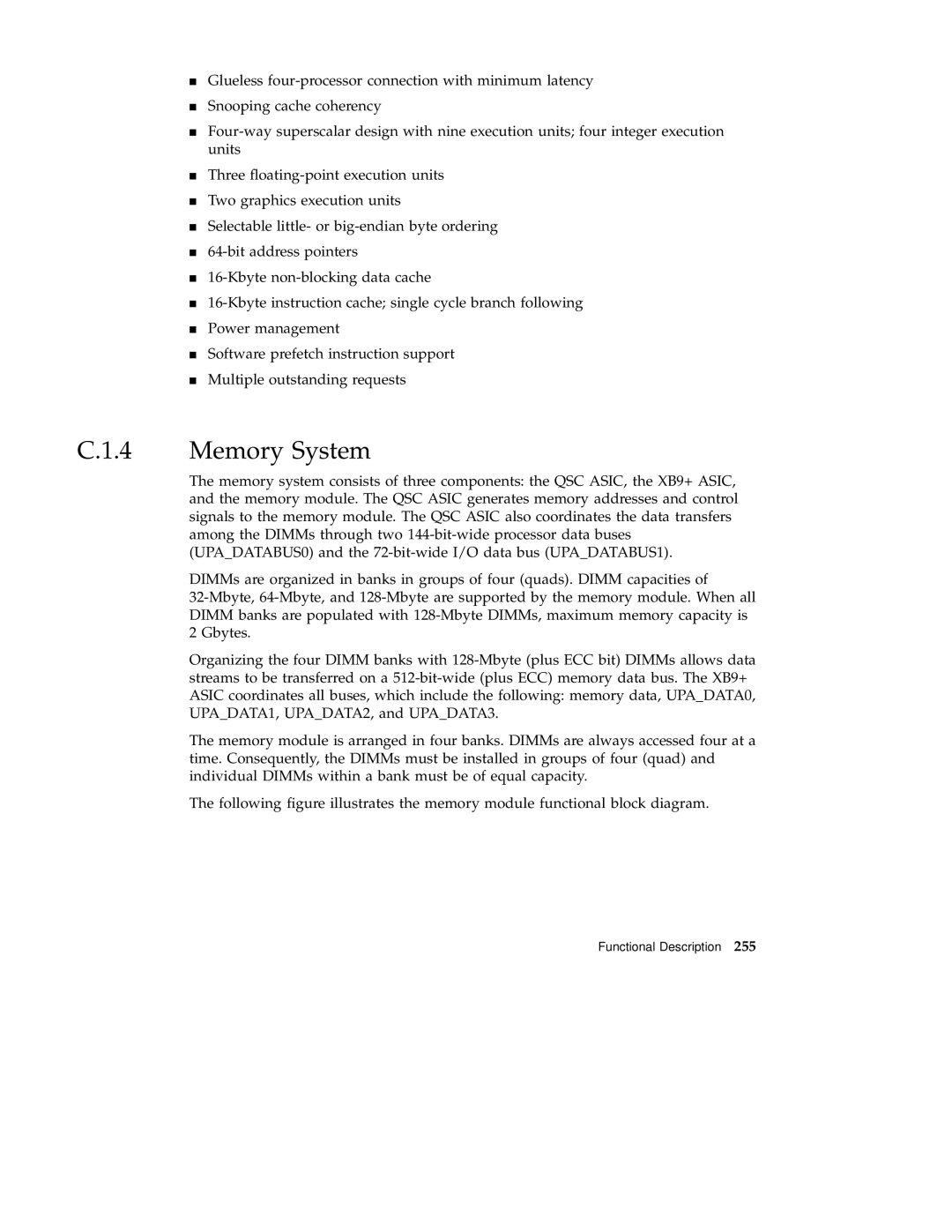Glueless
Snooping cache coherency
Three
Two graphics execution units
Selectable little- or
Power management
4Software prefetch instruction support Multiple outstanding requests
C.1.4 Memory System
The memory system consists of three components: the QSC ASIC, the XB9+ ASIC, and the memory module. The QSC ASIC generates memory addresses and control signals to the memory module. The QSC ASIC also coordinates the data transfers among the DIMMs through two
DIMMs are organized in banks in groups of four (quads). DIMM capacities of
Organizing the four DIMM banks with
The memory module is arranged in four banks. DIMMs are always accessed four at a time. Consequently, the DIMMs must be installed in groups of four (quad) and individual DIMMs within a bank must be of equal capacity.
The following figure illustrates the memory module functional block diagram.
